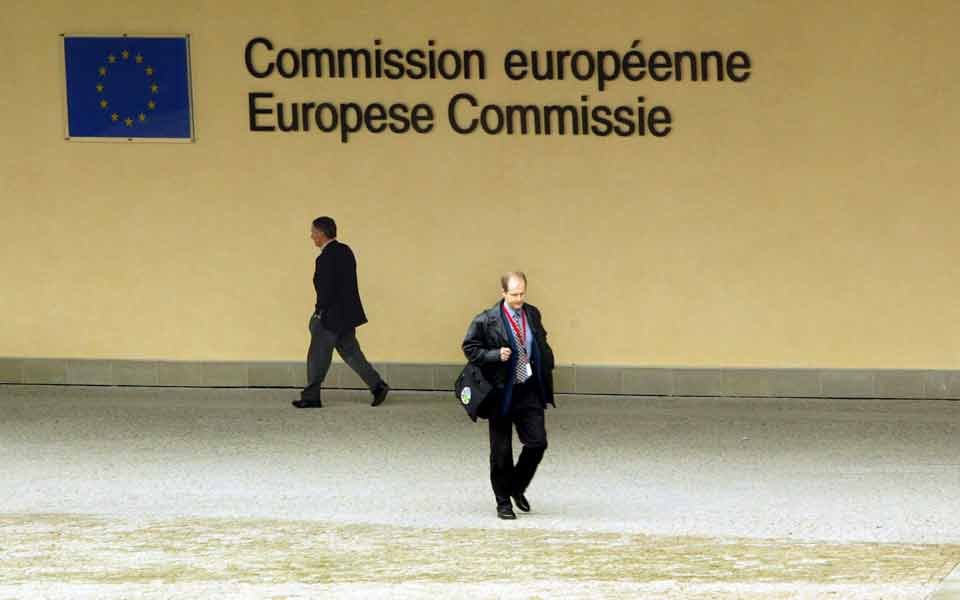Debt lightening to be a win-win situation

The three main stakeholders in the Greek debt issue, namely the government, the European lenders and the International Monetary Fund, will have to agree that debt relief is unavoidable and should be compatible with realistic primary fiscal targets from the start. If debt relief is granted on a conditional basis and centered on maintaining the unrealistically high 3.5 percent of GDP primary surplus from 2018 onward, the outcome will be inferior since it will be more difficult for Greece to regain investor confidence and market access.
In the regular order of events, the Eurogroup would have approved the first program review before debt relief negotiations started. An agreement on debt relief would pave the way for the IMF’s participation in the third bailout program, which is a precondition for more disbursements from the European Stability Mechanism (ESM). On Monday, at the informal Eurogroup meeting, we will find out whether this order will be kept or there will be another form.
By seeking parliamentary approval for the package of pension and tax measures worth 5.4 billion euros prior to the meeting, Athens wanted to strengthen its negotiating position. The move is also going to boost its credibility after the debacle that followed the publication by Wikileaks of a conversation between two IMF officials, according to independent observers.
Undoubtedly, the two open issues – that is the contingency fiscal measures worth 2 percent of GDP or 3.6 billion euros sought by the lenders in case Greece falls short of the 3.5 percent of GDP primary surplus goal in 2018, and the start of talks on debt relief sought by Greece – are not easy to tackle. However, the ability of EU bureaucrats and politicians to find solutions based on consensus should not be underestimated.
In this context, we would not be surprised if a compromise was reached either on Monday or at the regular Eurogroup on May 24 to start talks toward making the Greek debt sustainable and even agree on the details of a plan, but postpone its implementation for later. This is possible since Greece’s funding needs are manageable until 2023 because of the concessional terms of EU loans, interest deferrals and long maturities. The ESM program worth up to 86 billion euros fully covers the country’s financing needs until mid-2018, when it expires.
The country owes 52.9 billion to eurozone member-states in bilateral loans with an average maturity of 30 years and 130.9 billion euros to the European Financial Stability Facility (EFSF) with the average loan maturity at 32.5 years. The ESM has disbursed 21.4 billion euros so far with the average maturity at 32.5 years. Greece also owes 14.3 billion euros to the IMF under the Stand-By Arrangement (SBA) and Extended Fund Facility (EFF). The maturities of SBA loans range from 3.25 to five years and the EFF’s from 4.5 to 10 years. The interest rate is equal to the Special Drawing Right (SDR rate) plus 300 basis points. Analysts estimate the effective rate paid by Greece on debt servicing at around 2 percent because of the EU concessionary terms.
At this point, it looks more likely debt relief will be granted on a conditional basis, depending on Greece meeting certain milestones. This may have some advantages from the creditors’ point of view but also has certain disadvantages. From the EU’s angle, this debt relief provides incentives for sticking to the bailout program. To moderate the moral hazard and discourage expansionary fiscal and incomes policies, the EU could even seek conditionality to be extended beyond the end of the program in mid-2018.
On the other hand, such a piecemeal approach toward debt relief will likely allow the market uncertainty regarding the sustainability of the debt in the long run to continue. Therefore, it may lead to a slower decline of Greek yield spreads than would have been the case if debt relief was front-loaded. In addition, it could create friction from time to time between the local authorities and the EU lenders.
It is also very important that any reprofiling of the Greek debt is based on a realistic primary surplus target from 2018 onward. This will result in a higher cost for the EU creditors but makes the whole exercise more credible in the eyes of market participants and could accelerate the decrease of Greek yields. This means the country could access the markets at reasonable, better rates faster than otherwise, perhaps reducing the total bill for the EU. For part, Greece will have to regret not complying with the second bailout program to receive debt relief unconditionally in line with the Eurogroup’s statement on November 27, 2012.
[Kathimerini English Edition]





